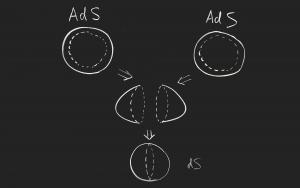Content:
The fabric of space and time is widely believed by physicists to be emergent, stitched out of quantum threads according to an unknown pattern. And for 22 years, they’ve had a toy model of how emergent space-time can work: a theoretical “universe in a bottle,” as its discoverer, Juan Maldacena, has described it.
The space-time filling the region inside the bottle — a continuum that bends and undulates, producing the force called gravity — exactly maps to a network of quantum particles living on the bottle’s rigid, gravity-free surface. The interior “universe” projects from the lower-dimensional boundary system like a hologram. Maldacena’s discovery of this hologram has given physicists a working example of a quantum theory of gravity.
But that doesn’t necessarily mean the toy universe shows how space-time and gravity emerge in our universe. The bottle’s interior is a dynamic, Escheresque place called anti–de Sitter (AdS) space that is negatively curved like a saddle. Different directions on the saddle curve in opposite ways, with one direction curving up and the other curving down. The curves tend toward vertical as you move away from the center, ultimately giving AdS space its outer boundary — a surface where quantum particles can interact to create the holographic universe inside. However, in reality, we inhabit a positively curved “de Sitter (dS) space,” which resembles the surface of a sphere that’s expanding without bounds.
Ever since 1997, when Maldacena discovered the AdS/CFT correspondence — a duality between AdS space and a “conformal field theory” describing quantum interactions on that space’s boundary — physicists have sought an analogous description of space-time regions like ours that aren’t bottled up. The only “boundary” of our universe is the infinite future. But the conceptual difficulty of projecting a hologram from quantum particles living in the infinite future has long stymied efforts to describe real space-time holographically.
In the last year, though, three physicists have made progress toward a hologram of de Sitter space. Like the AdS/CFT correspondence, theirs is also a toy model, but some of the principles of its construction may extend to more realistic space-time holograms. There is “tantalizing evidence,” said Xi Dong of the University of California, Santa Barbara, who led the research, that the new model is a piece of “a unified framework for quantum gravity in de Sitter [space].”


